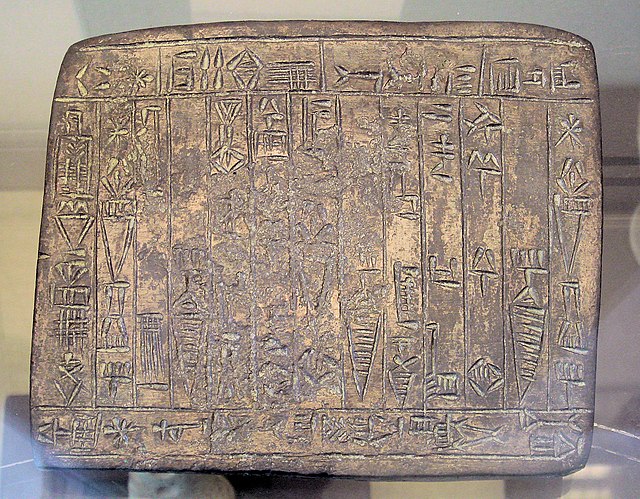The Hurrian religion was the polytheistic religion of the Hurrians, a Bronze Age people of the Near East who chiefly inhabited the north of the Fertile Crescent. While the oldest evidence goes back to the third millennium BCE, it is best attested in cuneiform sources from the second millennium BCE written not only in the Hurrian language, but also Akkadian, Hittite and Ugaritic. It was shaped by contacts between the Hurrians and the various cultures with which they coexisted. As a result, the Hurrian pantheon included both natively Hurrian deities and those of foreign origin, adopted from Mesopotamian, Syrian, Anatolian and Elamite beliefs. The culture of the Hurrians was not entirely homogeneous, and different local religious traditions are documented in sources from Hurrian kingdoms such as Arrapha, Kizzuwatna and Mitanni, as well as from cities with sizeable Hurrian populations, such as Ugarit and Alalakh.
Hurrian incense container
An early Hurrian royal inscription.
Teššub, Ḫebat and their family and court, as depicted in Yazılıkaya.
A parade of gods depicted on reliefs in the Yazılıkaya sanctuary, arranged according to a kaluti list.
Mitanni, earlier called Ḫabigalbat in old Babylonian texts, c. 1600 BC; Hanigalbat or Hani-Rabbat in Assyrian records, or Naharin in Egyptian texts, was a Hurrian-speaking state in northern Syria and southeast Anatolia with Indo-Aryan linguistic and political influences. Since no histories, royal annals or chronicles have yet been found in its excavated sites, knowledge about Mitanni is sparse compared to the other powers in the area, and dependent on what its neighbours commented in their texts.
Cylinder seal, c. 16th–15th century BC, Mitanni
Cuneiform tablet containing a letter from Tushratta of Mitanni to Amenhotep III (of 13 letters of King Tushratta). British Museum
Cylinder seal, c. 1500–1350 BC, Mitanni







